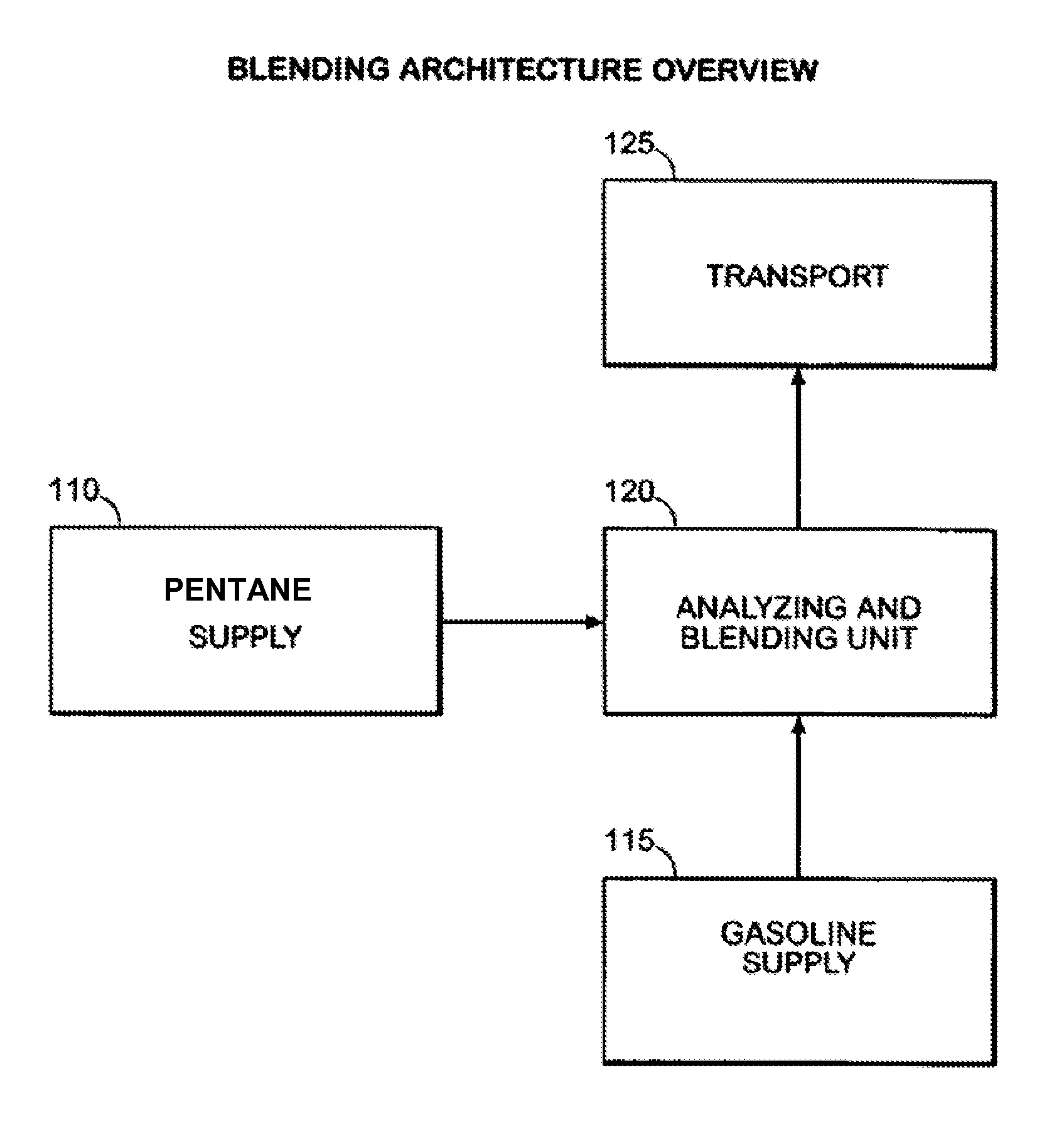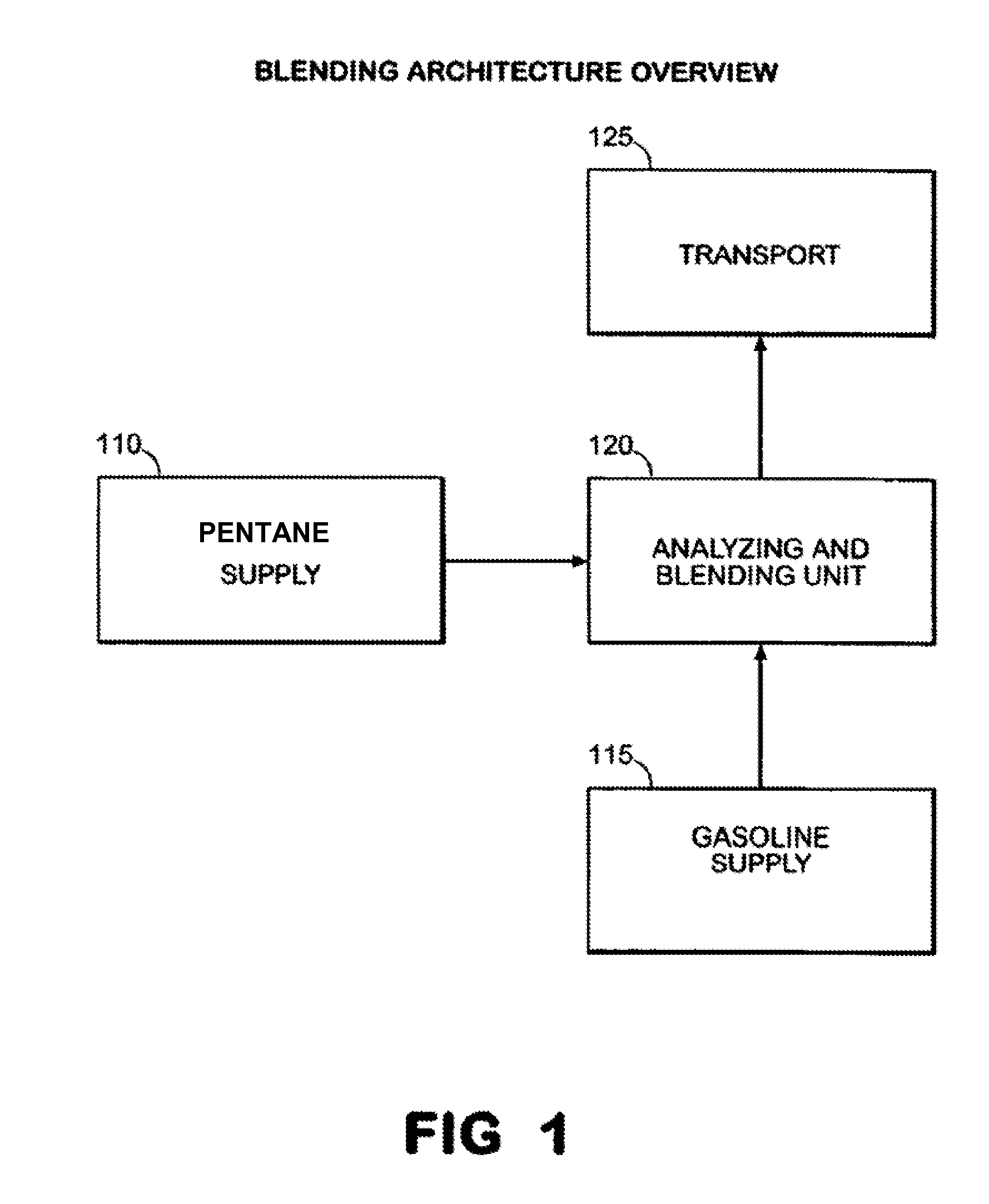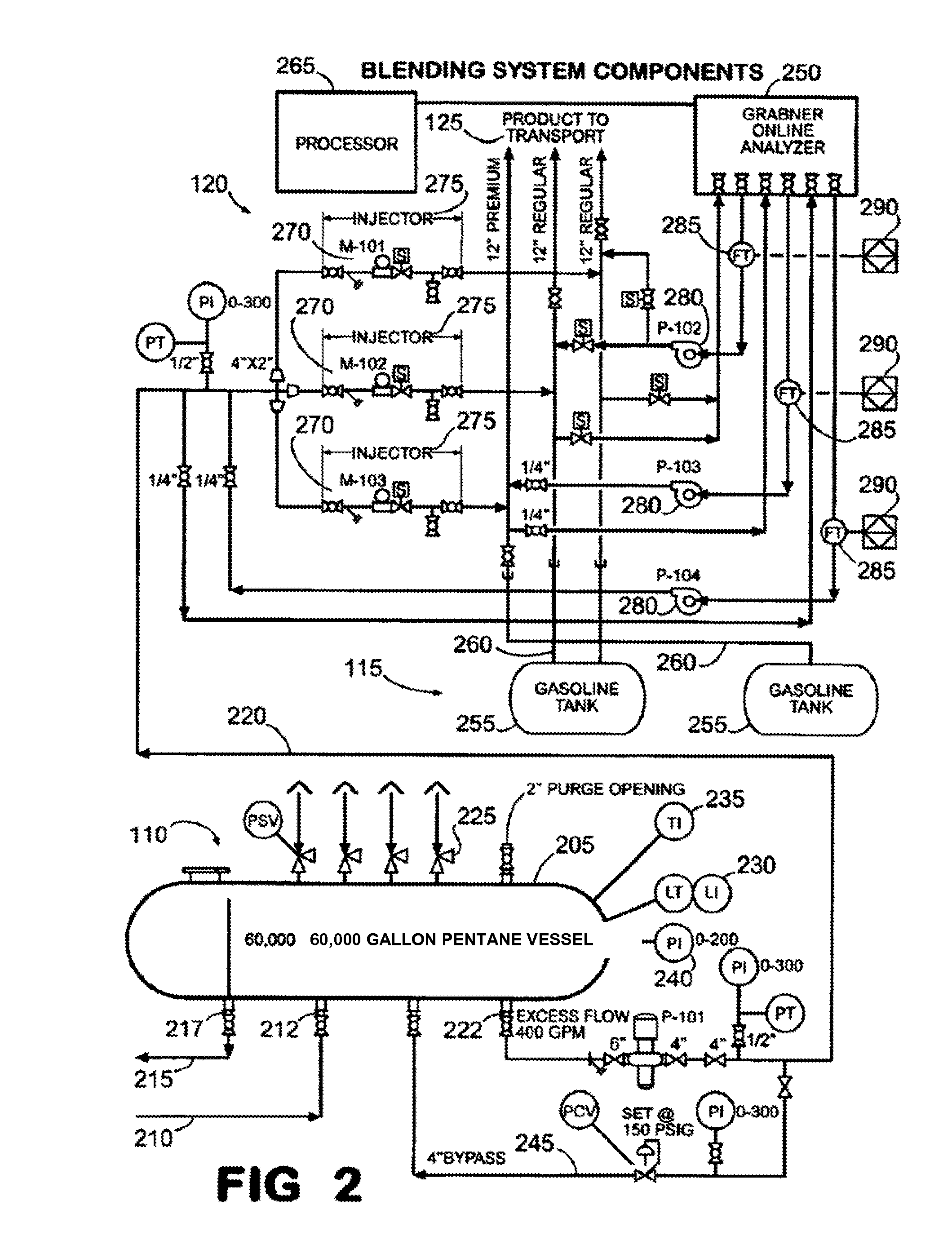Expansion of fuel streams using mixed hydrocarbons
a technology of hydrocarbons and fuel streams, applied in the direction of liquid handling, packaging goods, transportation and packaging, etc., can solve the problems of limiting or excluding the blending of mixed pentanes in some environments, and achieve the effect of significant variability in the octane and volatility of the resulting fuel streams
- Summary
- Abstract
- Description
- Claims
- Application Information
AI Technical Summary
Benefits of technology
Problems solved by technology
Method used
Image
Examples
example 1
[0130]The following Table 1A summarizes the aromatic effect typically observed from addition of hydrocarbons to a gasoline stream:
[0131]
TABLE 1ARVP BLENDING VALUESvol % (aromatics)rvp (pure HC)01020304050Ethane730.0474.0474.0474.0474.0474.0474.0Propene226.0216.0216.0216.0216.0216.0216.0Propane190.0173.0173.0173.0173.0173.0173.0isobutane72.262.073.985.496.6107.6118.8isobutene63.476.578.981.383.786.288.9Butene-163.076.178.480.882.785.187.4n-Butane51.652.955.658.360.963.566.2trans-2-Butene49.862.164.066.068.070.072.0cis-2-Butene45.558.660.562.364.266.169.0Isopentane20.421.922.222.522.923.323.7C, olefins*16.517.918.118.418.618.819.0n-Pentane15.616.917.217.417.818.018.2
[0132]Table 1B summarizes relevant physical properties associated with pentane blending into gasoline:
[0133]
TABLE 1BBlendingBoiling PtNeat OctaneOctane(° F.)RVPTV / L = 20(R + M / 2)(R + M / 2)n-butane3155negative9292n-pentane97168765>65neopentane49205083>83isopentane8235 19191
example 2
[0134]Unleaded regular and premium gasoline blends satisfying the performance characteristics of ASTM D4814-01a were blended with varying amounts of a mixed pentane stream containing 55% n-pentane and 45% iso-pentane (hereinafter referred to as “mC5”), a 55:45 mixture of the butane and mC5, a 80:20 mixture of the butane and mC5, and the resulting blends measured for RVP and octane. The same blends were subsequently mixed with 10% ethanol and their RVP and octane values measured a second time. RVP and octane values of the starting gasoline and resulting blends are reported below in Tables 2A-2F.
[0135]All RVP values reported in the following examples were measured according to ASTM D 5191. Octane is reported as (R+M) / 2, where R equals the research octane number calculated according to ASTM D 2699, and M equals the motor octane number calculated according to ASTM D 2700. Butane used in all blends was n-butane.
[0136]
TABLE 2ACBOBCBOB + EtOHPBOBPBOB + EtOHRVP5.827.255.286.54+4.5% mC5 6.64...
example 3
[0151]The following iterative procedure described in “How to Estimate Reid Vapor Pressure (RVP) of Blends,” J. Vazquez-Esparragoza, Hydrocarbon Processing, August 1992, can be used to predict the RVP of a mixture of hydrocarbon components. Importantly, the procedure can be used for hydrocarbon components defined by either their chemical composition or their physical properties. For this reason, it can be used to calculate the volatility of a blend of (1) butane, which has a known chemical composition, (2) mixed pentanes or raw butane, and (3) a mixture of gasoline, butane and mixed pentanes, which has an unknown chemical composition, but can be defined by its physical properties obtained from a volatility analysis. Advantageously, the algorithm can by implemented in a computer simulation.
[0152]Step 1. Calculate the molecular weight (MW) of the sample mixture:
MWmix=ΣixiMWi
[0153]Step 2. Evaluate the density (ρ) of the sample at T=35, 60, and 100° F. Compute the liquid expansion of th...
PUM
| Property | Measurement | Unit |
|---|---|---|
| octane rating | aaaaa | aaaaa |
| octane rating | aaaaa | aaaaa |
| octane rating | aaaaa | aaaaa |
Abstract
Description
Claims
Application Information
 Login to View More
Login to View More - R&D
- Intellectual Property
- Life Sciences
- Materials
- Tech Scout
- Unparalleled Data Quality
- Higher Quality Content
- 60% Fewer Hallucinations
Browse by: Latest US Patents, China's latest patents, Technical Efficacy Thesaurus, Application Domain, Technology Topic, Popular Technical Reports.
© 2025 PatSnap. All rights reserved.Legal|Privacy policy|Modern Slavery Act Transparency Statement|Sitemap|About US| Contact US: help@patsnap.com



